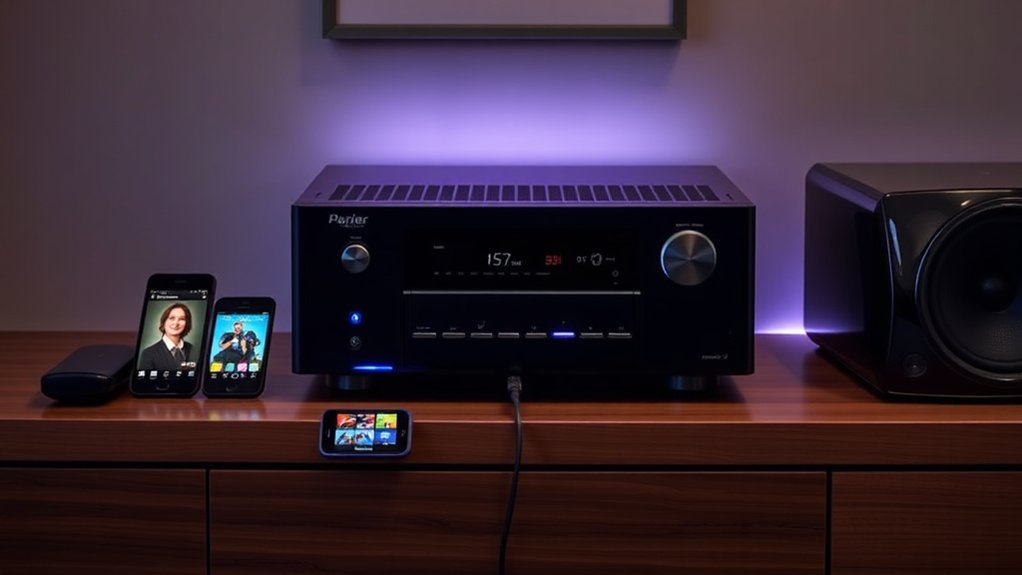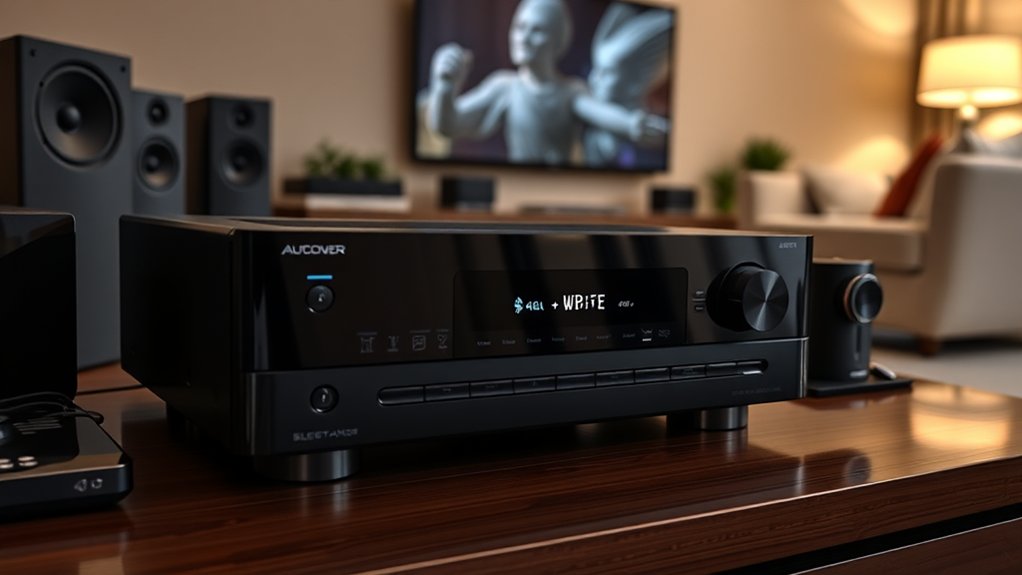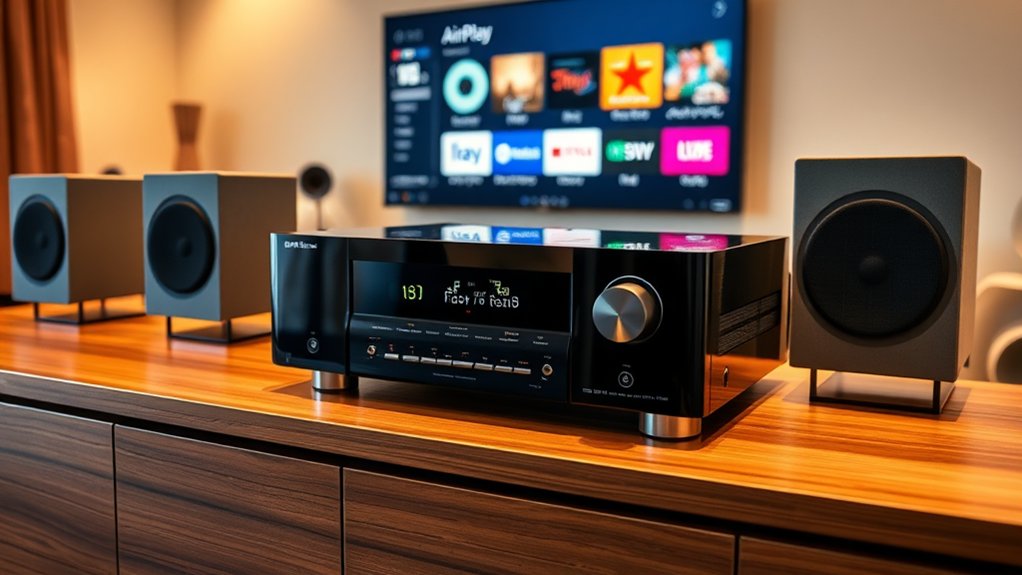To stream music to your AV receiver effectively, consider wired Ethernet connections for stability and better audio quality—think of it as the strong foundation of a house. Wireless options, like AirPlay or Bluetooth, can work well, but they may stumble over obstacles (literally and figuratively). Use streaming protocols like HLS for flexible quality and choose devices that support high-resolution formats. With the right adjustments and equipment, your listening experience can be enhanced considerably. Curious about specific setup tips?
Key Highlights
- Use a wired Ethernet connection for greater stability and minimal interruptions when streaming music to AV receivers.
- Ensure your AV receiver supports popular streaming protocols like AirPlay 2, Bluetooth, and Chromecast for compatibility.
- Optimize audio quality by utilizing streaming protocols such as HLS and DASH, which adjust quality based on connection speed.
- Regularly update the firmware of your AV receiver for better compatibility and performance with streaming services.
- Utilize external DACs and high-bitrate streams for a richer sound experience when streaming music.
Wired vs. Wireless Streaming Options
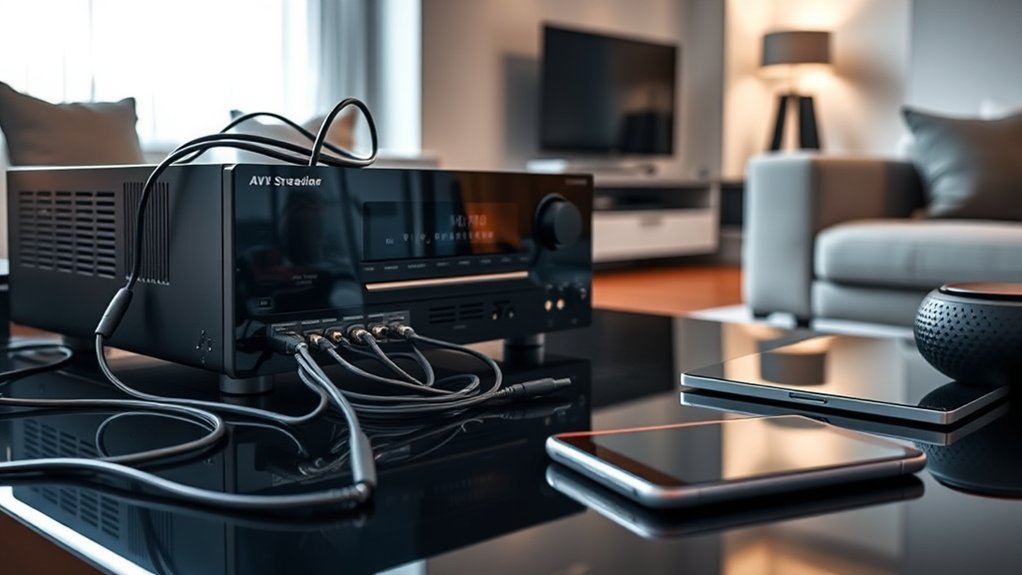
In regard to streaming music to your AV receiver, you’ll often find yourself weighing the benefits of wired versus wireless options.
Wired connections, typically using Ethernet, offer stability and reliability most audiophiles crave—after all, who wants annoying dropouts when vibing to their favorite tunes? With wired setups, you’ll experience minimal interruptions and lower latency, making them ideal for synchronized multi-room audio. Moreover, Ethernet avoids frequent connection problems that are common with Wi-Fi setups. This is particularly advantageous given that wired connections generally ensure superior audio quality.
Nevertheless, a well-placed Wi-Fi signal can deliver decent sound too—provided your connection is strong! Just remember, wireless options can fluctuate because of traffic and physical barriers.
So, if you’re a critical listener, you might prefer the guaranteed fidelity of a wired connection, whereas convenience-seekers might lean toward the hassle-free allure of wireless streaming.
What’s your priority?
Utilizing Streaming Protocols for Seamless Playback
When you’re streaming music to your AV receiver, the choice of protocol can make all the difference in your listening experience. Streaming protocols like HLS and DASH optimize how audio is sent over your network—kind of like choosing the best delivery service for your favorite pizza. HLS, for instance, breaks audio into small chunks, adjusting quality based on your internet connection, ensuring smooth playback without endless buffering. On the flip side, DASH offers flexibility in audio formats, perfect for high-resolution sound fans. To achieve this high-resolution audio, consider utilizing external DACs for a richer sound experience. Additionally, many streaming platforms, such as Spotify free edition, have specific requirements which can impact your audio quality depending on the protocol used.
Choosing Compatible Devices and Formats
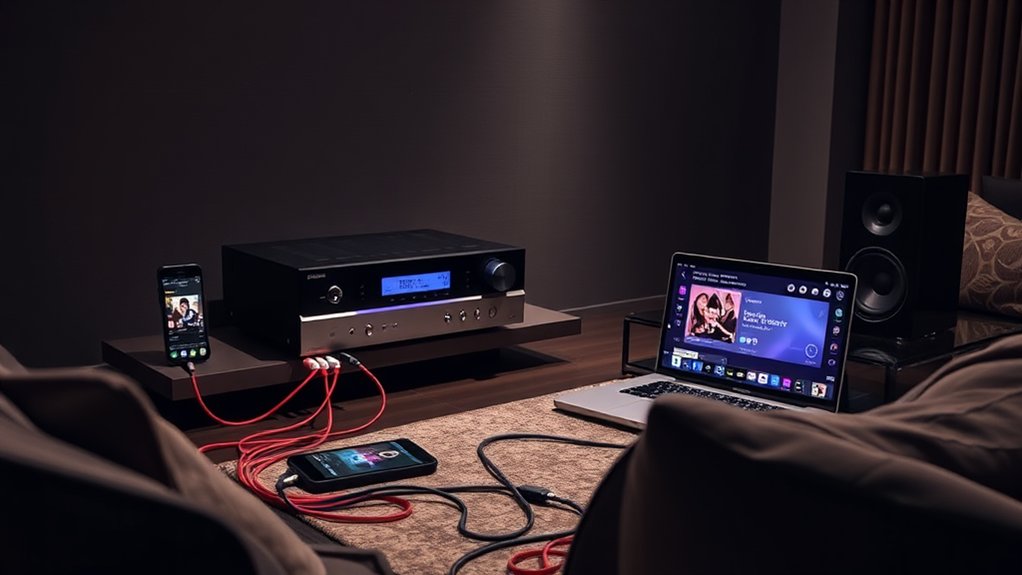
Choosing the right devices and formats for streaming music to your AV receiver can feel a bit like guiding through a techy maze. Start by ensuring your receiver supports popular streaming protocols—think AirPlay 2, Bluetooth, and Chromecast—so you can enjoy music from various services without a hitch. Models like the Yamaha RX-V6A and Onkyo TX-NR6100 check these boxes. Additionally, many of these receivers offer high connectivity for optimal streaming performance. Don’t forget about audio formats; your receiver should handle everything from compressed MP3s to high-resolution FLAC files, fundamentally providing a rich listening experience. As you consider your setup, look for reliable network options—dual-band Wi-Fi and an Ethernet port can be your best friends on this path. After all, who wants music dropouts during a favorite song?
Enhancing Audio Quality and Experience
With the right devices and formats in place, it’s time to turn your attention to enhancing audio quality and experience, since who doesn’t want their favorite tunes to sound as rich and immersive as possible?
Start by adjusting EQ settings on your AV receiver; this tailored approach improves clarity and guarantees tonal balance. If you’re feeling adventurous, activate virtual surround sound modes—nothing like a little simulated ambiance for your living room, right?
Fine-tuning bass and treble can as well boost detail, making every note pop. Don’t forget about room correction and dynamic range control, which optimize how sound interacts with your space, refining that elusive perfect audio bliss.
After all, your music deserves it!
Best Practices for Optimal Streaming Performance
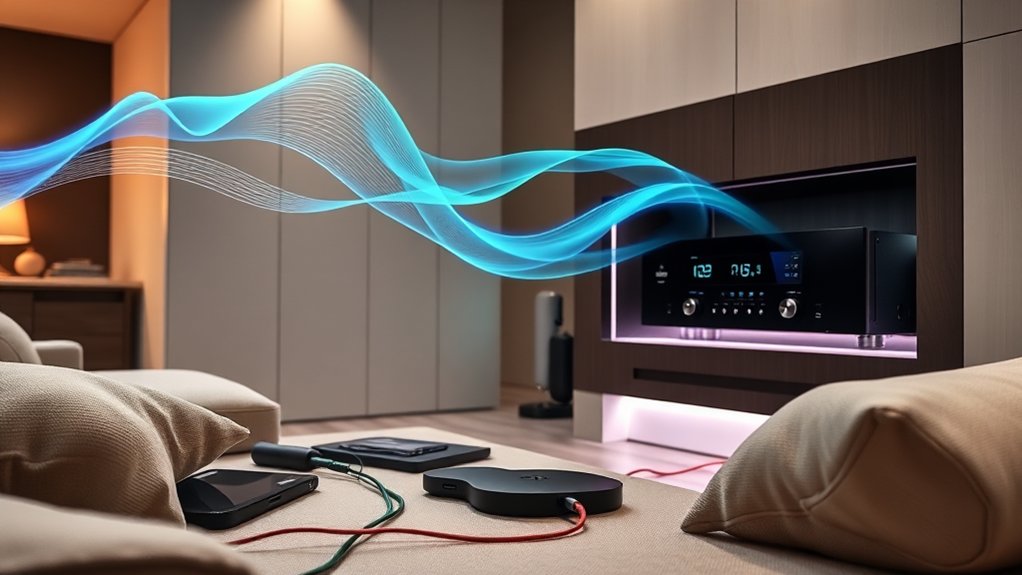
How often do you find yourself frustrated by buffering or dropouts during streaming your favorite tracks? To guarantee a smooth experience, prioritize using a wired Ethernet connection over Wi-Fi, as it offers superior reliability.
Additionally, confirm your AV receiver and streaming source are on the same local network segment; this can greatly improve connectivity. Always keep your firmware up to date, since updates enhance compatibility with streaming services.
Check that your receiver supports your preferred streaming formats and use high-quality cables to maintain audio integrity. Finally, choose high-bitrate streams when available—because who doesn’t want the best sound?
Implementing these practices will help you enjoy uninterrupted music, allowing you to focus on those perfect playlists instead of bothersome interruptions.
Frequently Asked Questions
What Are the Advantages of Using a Dedicated Music Streamer?
Using a dedicated music streamer improves your audio experience with superior sound quality, reliable playback, and convenient access to multiple formats. It simplifies connections, consolidates your music library, and future-proofs your setup for high-resolution streaming.
How Do I Set up Multi-Room Audio With My AV Receiver?
To set up multi-room audio with your AV receiver, connect your components, configure speaker zones, utilize a control app for managing playback, and test each room to verify ideal sound and functionality throughout your home.
Can I Stream Music From My Smartphone to the AV Receiver?
Yes, you can stream music from your smartphone to the AV receiver. You’ll find options like Bluetooth, wired connections, or Wi-Fi streaming devices that let you enjoy high-quality audio without hassle. Choose what fits your needs best.
Are There Any Monthly Costs Associated With Music Streaming Services?
Yes, there are monthly costs associated with music streaming services. You can choose subscription tiers based on your needs, with options like individual plans, family plans, or student discounts to save money.
How Can I Improve My Home Wi-Fi for Better Streaming Performance?
To improve your home Wi-Fi for better streaming performance, position your router centrally, use wired connections where possible, adjust antenna angles, switch bands based on needs, limit device usage, and regularly update your equipment.

